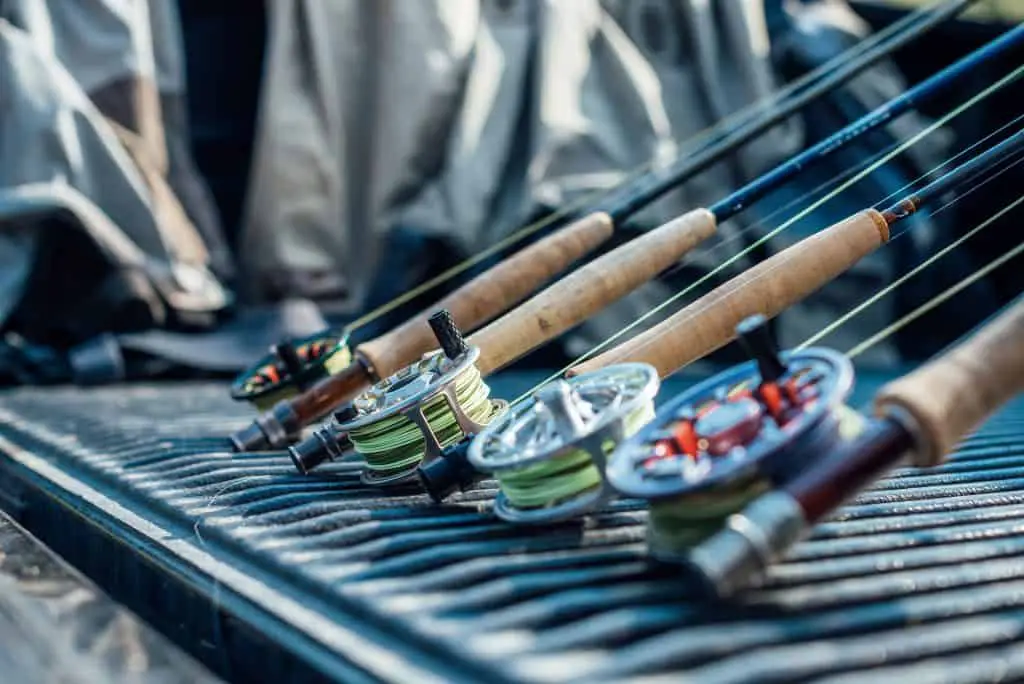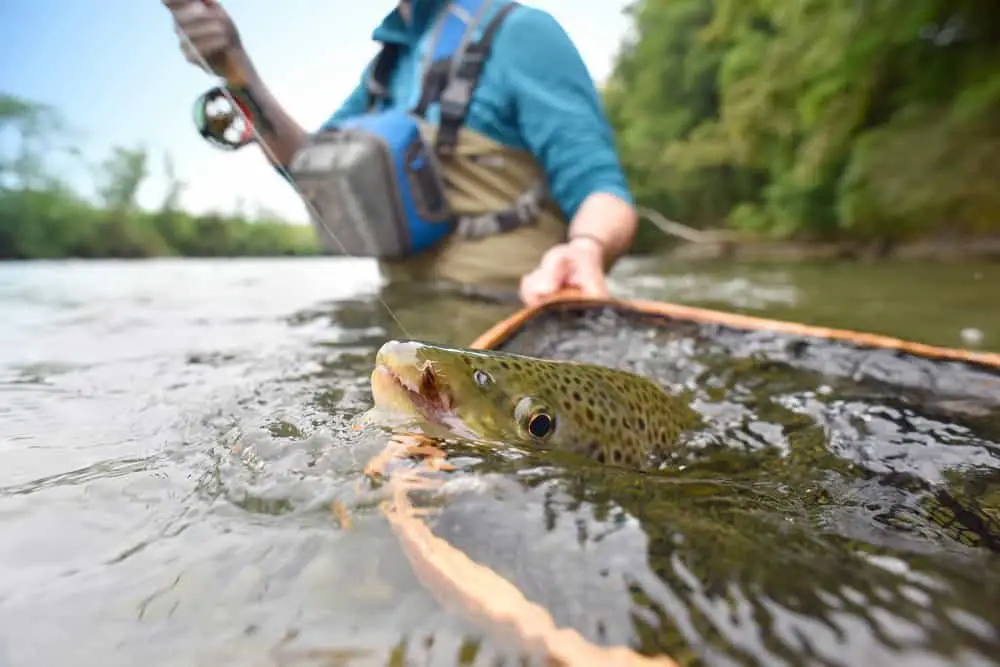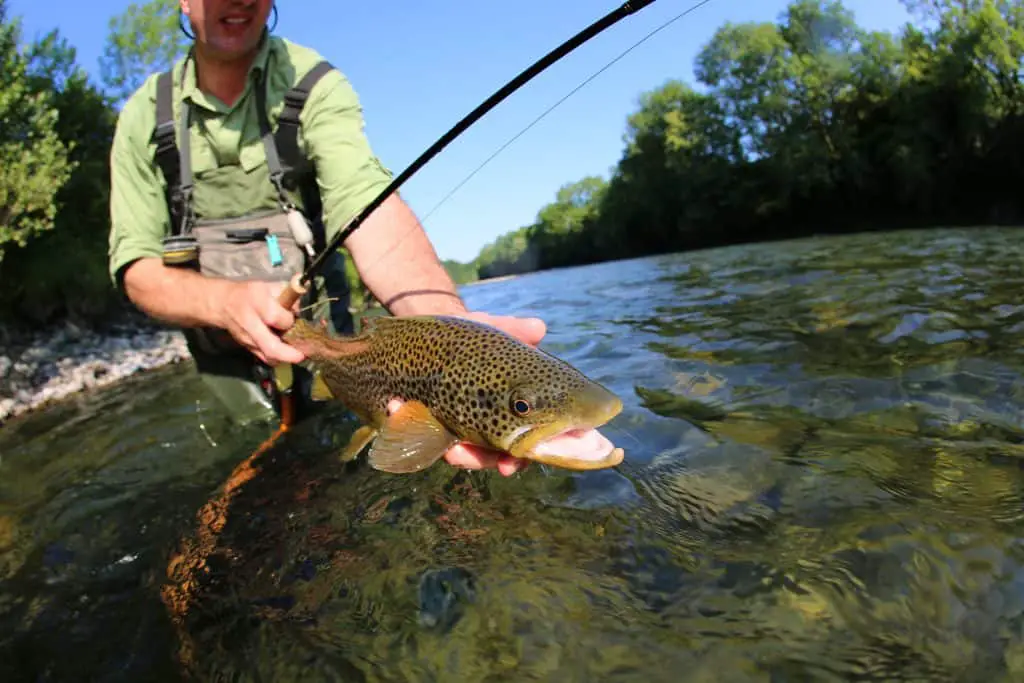As an Amazon Associate we earn from qualifying purchases.
You’ve had your line for a couple of years now and never had an issue with it. It sailed through the guides without hesitation, and floated on the water like a timber rattler swimming across a stream.
But as the years have waged your line has been exposed to sun light, algae, abrasion from debris and just general wear and tear.
You may think it’s time to change out your line. But first, we recommend you give it a quick cleaning and see if that makes a difference. It might end up saving you some money.
Table of Contents
How Long Does Fly Line Last?
Fly line, not to be confused with leader and tippet, can have a shelf life that is determined by various factors.
Some line is just better made and will last longer. For Example, the company “Airflo” creates some of the most durable fly lines on the market. This is because they coat their line with polyurethane instead of the normal PVC. Polyurethane is a much more durable material, is resistant to cracking and is also abrasion resistant.
Usually the item that costs more than the bottom shelf is just generally going to be a better line and will last you longer. A dirt cheap line has an expiration date on it, no matter how often you clean it.
If you’re an avid brookie fisherman who is hitting up a lot of those clear mountain streams you’re going to have better line life than someone who is fishing saltwater. The lack of sand and salt is going to help increase your lines longevity. But that’s only true if you take the time actually clean it. A mountain stream is still going to dirt, grime, and algae that all can affect your line.
How you fish can also affect how your line will last. If you’re an avid thrower of streamers and you’re constantly bumping your line against rocks, and other debris then that is going to affect how long your line lasts. This will eventually cause tears to the outside of the fly line, which will begin to mess with your casting distance and accuracy. Same if your a nymph fisherman and you use sinking line.
Something most fisherman don’t think about is that all the different sunscreens and bug sprays you use can damage the line as well. Most fly lines are coated with PVC, and any residual chemicals on your hands could reduce the lifespan of your line by deteriorating that coating. If your applying sunscreen or bug spray make sure to keep it off your hands or give them a good wash and dry before handling your line again.
Stay off of your fly line. Fishing from a boat can put you in the best possible position to catch fish, but it has one of the greatest threats to damaging your line. And that’s standing on it with shoes on. Besides physically ripping and tearing the line yourself, standing on it with your shoes on is on the worse things you can do. The good news is that this is an easy fix. You can either choose to fish barefoot, or use a stripping bucket where your excess line will fall into.
Also, if you plan on stocking up on fly line before you actually need it, make sure it stays in its original box, or is at least left somewhere dark where light cannot affect it. This will help protect it until you are ready to string up your reel.
If you are cleaning your line consistently and treating it (generally) well then you should realistically get 200 or so trips out of it.
Which means If you’re the type of angler who averages 4 fishing trips a month, and cleans their line regularly, then you should get roughly 4 years of use from your line.
Basic maintenance is the key to keeping your line in tip top shape. You can purchase A $100 package of line but if you never clean it or leave your reel out in the sun exposed to the elements, then you’re better off just purchasing the dirt-cheap option, because they’re going to last you just as long.
Line Maintenance
Once anglers start seeing their floating line sink, or notice the line catching on the guides, they think it’s time to change it out. Without hesitation they will strip off the line, and drop $50 on a brand-new fly line without batting an eye.
Instead of dropping half a hundred of your hard-earned money take some time to thoroughly clean your line and protect your fishing investment.
In the same vein as cleaning your reel, cleaning your line tends to get overlooked by most anglers. It’s easy to look past an aspect that does not immediately affect you or your fishing abilities.
But as time wears on so will your line, and proper cleaning can bring longevity to it.
How often Should you Clean your Line?
The frequency with which you clean your line depends on what type of water you’re going to be fishing. If you’re line is consistently in sandy or muddy water then it’s best to clean your line every 3-5 trips.
You would be surprised at how much damage the excess sand and saltwater can cause.
Even if you’re fishing for Brookies in the cleanest of mountain streams you will still accumulate dirt and debris. In this type of water, you can get away with cleaning once every 10 or so trips.
Unlike spinning reels and baitcasters where 250 yards of fluorocarbon will run you $13, a good fly line could cost $50 or more.
Unless you’re guiding or on the water 200+ days a year you typically will not want to replace your fly line every season.
Proper cleaning can ensure you get several more years out of it and will save a lot of money in the long run.
How to Clean your Fly Line
Fill a bucket or your sink with warm water, and pull all of the fly line off of the reel. Then walk through the following steps:
- Add some dish soap to your warm water mixture
- Allow the line to soak in the water for 10 minutes
- Wrap a soft cloth around your hand and pull the line through it
- This cleans off any grime and dirt
- After you’ve cleaned your line take a new cloth and apply fly line dressing to it
- Run the line through the cloth with dressing on it and apply a liberal coating
- Reapply if need
- Re attach the fly line to your reel and put your reel cover back on
The majority of the time you will be surprised at how well your line works after being cleaned just once. There are too many fisherman replacing expensive fly line because their floating line begins to sink and they take that to mean the line is worn out and ready to be changed.
Take some time every couple of months and give your line a good cleaning. This will give it longevity and will enhance its performance.
When Should I Replace my Fly Line?
You’ve been taking care of your line and have been cleaning it with regularity. But you still notice that it no longer floats, and some frayed edges are beginning to catch on the guides, resulting in bad casts. This is now the time when you take a trip to your local fly shop.
What Line Should I Select?
Picking out your line is all about personal preference. They come in many different types of density, taper, and weight. But it’s up to you to figure out which one you prefer.
So, if the durability of your gear is something you take seriously, then below is a line worth checking out.
Not only is it known for its durability, but also for its fishing efficiency.
Airflo Super-Dri Trout
Airflo is a household name in the fly-fishing world. They have been leading the way in making some of the best fly lines in the market and this one is no different.
What they were able to do here is create a line that is 100% PVC and solvent free. Instead they used a polyurethane coating that floats and is not susceptible to bug spray, sunscreens, and other chemicals.
This creates an extremely durable line that an angler can use for a long time.
Their line also includes what is called “RIDGE Technology”. This means that ridges run along the entire length of the line and reduce the surface area of the line that contacts the guides on your rod.
This reduction in friction will result in longer casts and increasing the longevity of the line Itself.

Final Thoughts
Fly fishing can quickly become an expensive hobby, and fly line contributes to this, but it doesn’t have to be. If you don’t want to spend $50 on a fly line then the cheaper option will treat you just fine.
But know that If you never clean it and leave it out in the open its going to become damaged quickly and you will see that gradually your fishing and bank account will begin to suffer.
To sum everything up, just clean your line. Yes, it is a little tedious to strip your it all off, clean it, and then reattach to the backing.
But just like anything, continued maintenance on your gear will ensure it lasts just as long if not longer than advertised.
Let us know if you have any other questions, or feel free to explain what your cleaning routine is. Also, let us how long you’ve had your fly line.
Like, Share, and Comment below! We love hearing from our readers.
Amazon and the Amazon logo are trademarks of Amazon.com, Inc, or its affiliates.




Love reading your articles Dallas! I’ve learned so much! Just researching fly fishing now. Thanks for the solid info!